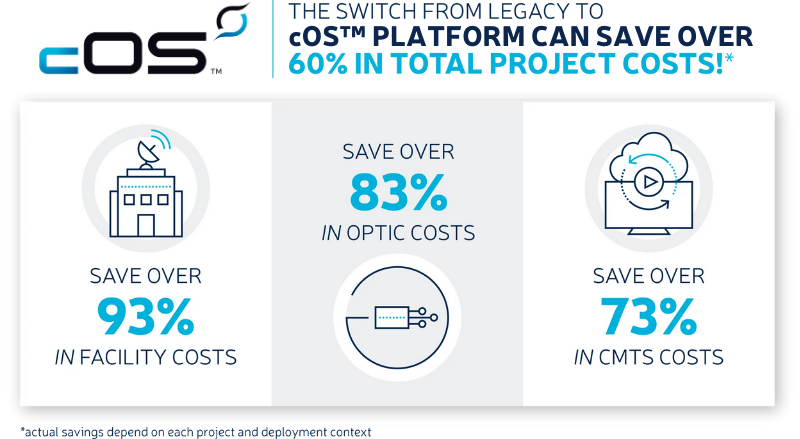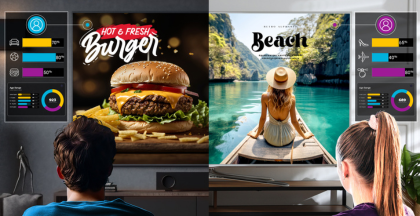New business models are emerging that are moored in digital enablement strategies. Broadband consumption will continue to increase for the foreseeable future making broadband networks an essential utility. How can cable operators provide the superior levels of service quality required for our increasingly digitally connected communities? What solutions are available and at what cost? This blog explores the approaches that operators can take today, to lay the foundation for sustainable, cloud-based broadband transformation.
Sustainable Approaches to Performance Enhancement
Cable operators have been adding capacity at a fast clip to meet the demand and are paying particular attention to increasing upstream capacity. However, some operators have been using traditional methods, which consist of adding fiber analog nodes (node splits) and activating another pair of CMTS ports for downstream and upstream traffic.
These approaches are unsustainable with heavy costs for additional RF cabling for DS splitting and U.S. combining, analog optics, hardware racks, which need real estate, power, cooling, maintenance and just simply add complexity to operations. The sudden change in consumer behavior and shifts in traffic patterns have the limitations of a hardware infrastructure clear in terms of dynamically scaling capacity in accordance.
Software-based solutions are proving to be simpler to operate, more scalable and adaptable to the needs of the market. More operators continue to transition to software and virtualize the headend. As a result, all the RF complexity is replaced with a simple and elegant IP network that helps deliver services with greater resiliency and with enhanced network performance overall, which directly impacts the customer experience.
Another Major Operator Chooses a Software-Based Architecture
Vodafone is another example of a major operator that adopted a cloud-native software solution. The operator has largely increased the number of households in Germany that receive gigabit services as they continue the nationwide rollout of DOCSIS 3.1 technology. Guido Weißbrich, director of network planning and network deployment at Vodafone Germany says “Through gigabit networks we are building a digital society that improves lives, enabling businesses and consumers to connect anywhere at any time. We chose Harmonic’s cOS™ platform solution to power our GigaCable Max service for its software-based architecture, scalability and efficiency, enabling us to deploy a world-class gigabit-capable network while solving critical space, power and cost challenges”.

As the leader in next-generation broadband access technology and the industry pioneer in virtualization, Harmonic enables operators to leverage greener gigabit network solutions with increased deployment velocity, scalability and efficiency.
The Role of Cloud-Native Solutions
The benefits of cloud-native solutions extend beyond eliminating hardware constraints.
Cloud-native solutions that have a more efficient form factor using less real estate, less energy, and are significantly more cost-effective to maintain. A recent analysis conducted by Intel in conjunction with Harmonic pointed to a significant 61% total cost of ownership (TCO) savings compared to a legacy hardware solution. The savings are summarized in the table below.
It is important to note that software-based solutions rely on microprocessors that are constantly becoming more powerful. The Harmonic cOS Platform uses 2nd generation Intel Xeon Scalable processors, which converge capabilities across compute, storage, memory, network and security. The Xeon processor is evolving, and future improvements in compute power will lead to even further cost savings, compared to the legacy solution.
Automation for Analytics Boost Network Efficiency
As crucial as it is, a significant TCO reduction is not the only advantage that next-generation cable access network solutions offer. The shift to cloud-native software platforms sets the stage for network and services automation using predictive analytics to get to pre-emptive healing and scaling of services.
Automation of routine tasks, as well as continuous monitoring, provides unprecedented visibility into network operations at a very granular level, which paves the way for proactive network management. It mitigates the costs of outages and improves the customer experience.
Automation also leads to major cost reductions and a significant increase in agility and velocity. A recent analysis by ACG research showed that end-to-end process automation ultimately results in 90% cost reduction while improving agility and speed by a factor of 10.
Automation will be essential for the rollout and management of networks going forward. Especially, as networks evolve with deployments of DAA, or backhaul enablement. 
Automation and Proactive Network Monitoring Reduce Operational Complexity
Automation goes beyond simplifying routine tasks. AI and machine learning are giving operators an unprecedented view of network activity, with data gathered in real-time. It offers operators the data and analytics needed to develop a more proactive approach to issue detection and resolution. The goal for operators is to leverage automation to optimize service delivery, based on the end-user experience, in real-time, or before an issue even occurs.
Smarter solutions are simply driving efficiency gains for network management and planning.
Cloud-native solutions that can enable greater automation make it possible to take PNM to the next level, leading to self-healing systems.
Harmonic’s cOS broadband platform is enabling operators to evolve the network for the next generation of broadband services. You can leverage with a greener, more sustainable solution for long-term business growth and network expansion.
Whether your looking to add capacity to your HFC DOCSIS network, reduce operational complexity with enhanced performance and automation, or eliminate hardware from the headend, cOS is the platform you need. For fiber and cable, and even fixed wireless access networks, cOS platform lays the foundation to bring the future of broadband to subscribers everywhere, for this generation and the next.
Contact us to learn more about how to prepare for the next generation of broadband and how to start saving on your network transformation today.










